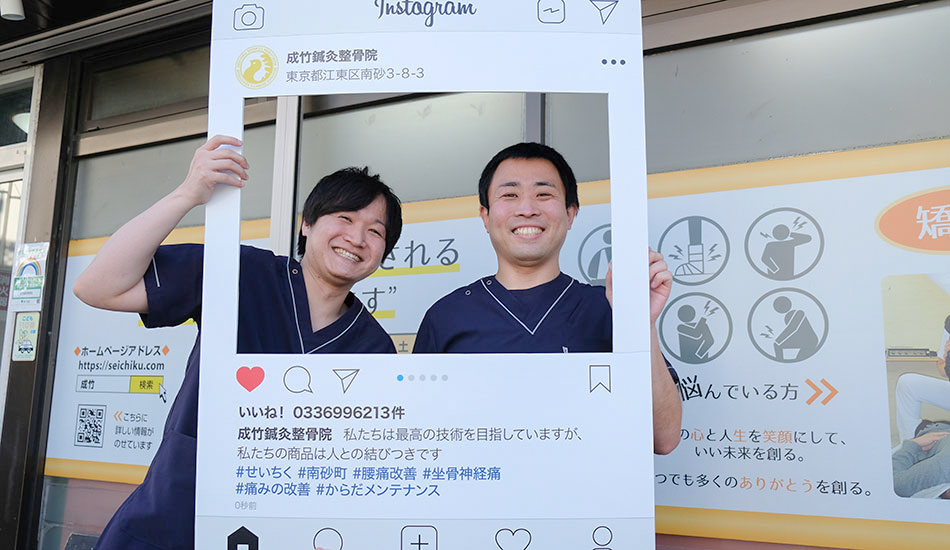Electroacupuncture, Osteopathy, Cupping and More!
Published: November 19, 2021
Tired? Stiff shoulders? Back pain? Poor posture from sitting in front of a computer all day? Eye strain? Niggling pains from playing sports or working out? Constipation? Putting on weight while working at home? If that sounds familiar and you’re in the Minamisuna area of Koto-ku, then the Seichiku Shinkyu Seikotsuin osteopathic clinic is the place to visit. On a recent sunny autumn morning, we dropped in to chat with clinic leader Junya Ishimoto, acupuncturist Yosuke Shinoda and staff members Mr. Nakajima and Ms. Ariyama.
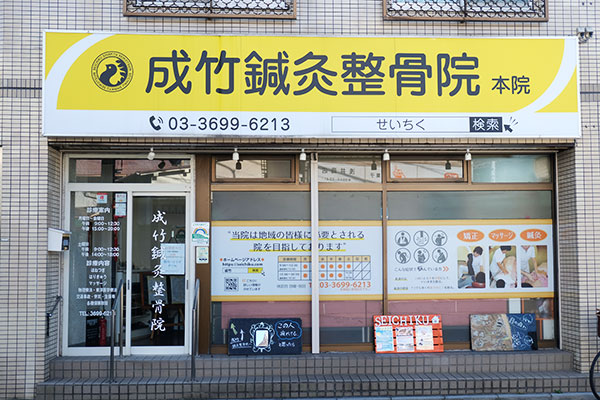
Located on Motohachiman Street some eight minutes’ walk from Minami-sunamachi station, Seichiku Shinkyu Seikotsuin was the first of the three Seichiku group clinics, opening in 1994. “Some of our oldest customers here are second generation, and we even have third generation customers now. Many are referred here or introduced by other customers: they come from all over, with many from as far away as Saitama,” said Ms. Ariyama.
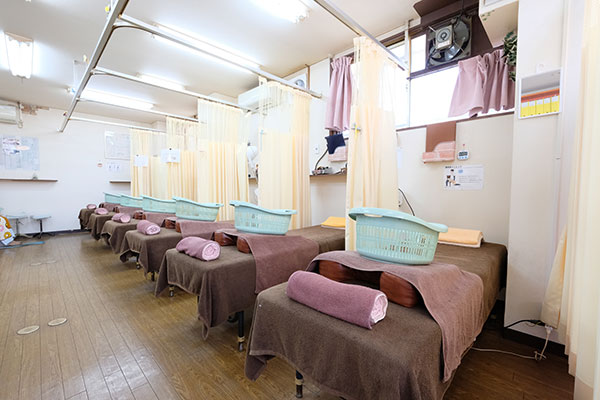
The clinic has six treatment tables and a friendly, relaxed atmosphere with the staff engaged in plenty of good-natured bantering. The manual therapies offered are similar to the other two clinics: osteopathic manipulation, moxibustion, cupping, and acupuncture, with the emphasis on the latter. We recently visited both the Shiohama clinic and the Shinkyuin Body Dezain in Higashisuna.

With little ado, Mr. Ishimoto applies gel to this electrical muscle stimulation device for what he calls intestinal massage (cho momi). The device is used to warm up the intestinal area; it’s a pleasant tingling sensation.
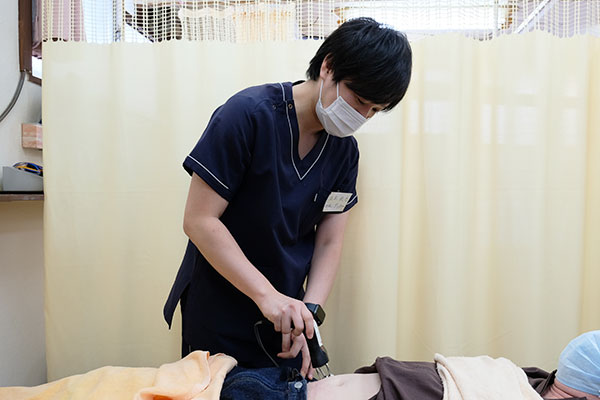
The purpose is to stimulate the intestines to promote peristaltic action and aid those suffering from constipation, a serious problem for many in Japan. Healthy bowels can improve skin condition and ease lower back pain, as well as aiding dieting.
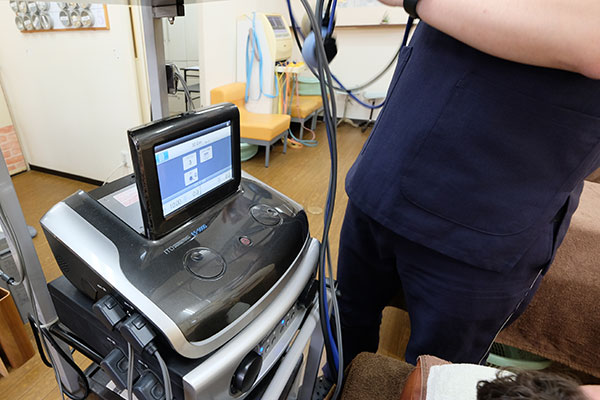
The various extensions and pads are connected to this multi-purpose electrical treatment machine.
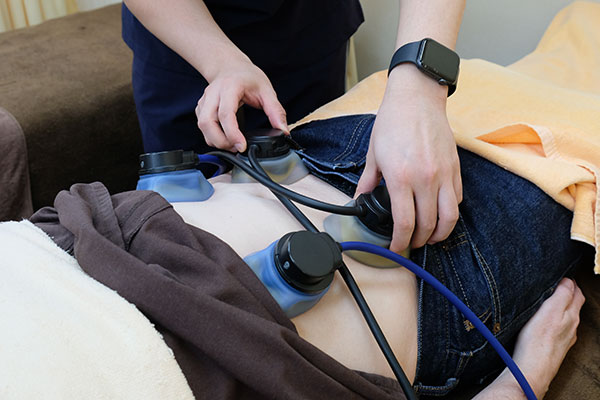
After warming up my intestines with the triple-pronged ES Stick, Mr. Ishimoto affixed four large terminal pads to my stomach area and switched them on. The machine delivers an electric current to the pads, stronger than the warm-up stick but still comfortable and relaxing. The current rotates through the four pads in a clockwise direction, stimulating the large and small intestines. “The movement stimulates peristaltic action in the intestines, which leads to improved evacuation of waste products from the bowels. The treatment also serves to strengthen the iliopsoas muscles, two vitally important muscles that connect the lumbar spine with the hip and play a key role in walking, running and sitting up.”
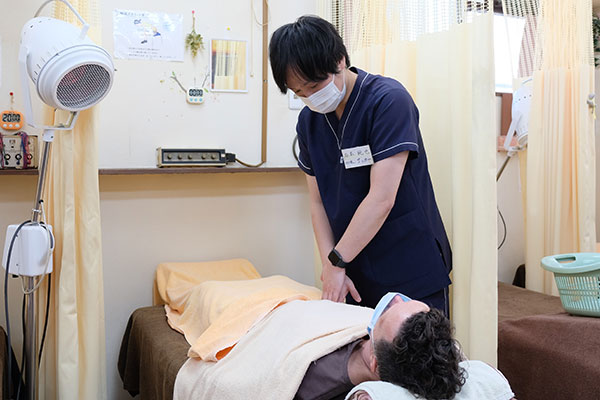
The session has taken about 20 minutes so far. Mr. Ishimoto then uses his hands to gently push and prod my intestines, the osteopathic massage section of the treatment.
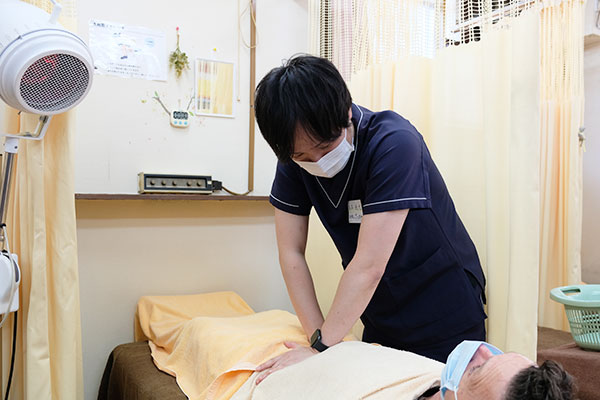
He quickly found a couple of hard areas on the right side which he gently manipulated, while the left side was surprisingly soft and problem free. The length of this part of the treatment depends on each patient’s individual condition. The electrotherapy portion of the session with the machine costs 3,300 yen, while the full programme including manual manipulation is 6,600 yen. Most people who receive this treatment experience a fulsome evacuation of the bowels the same day or the following day, as I did. For chronic lumbago sufferers Mr. Ishimoto recommended a weekly treatment for three months that should see marked improvement.
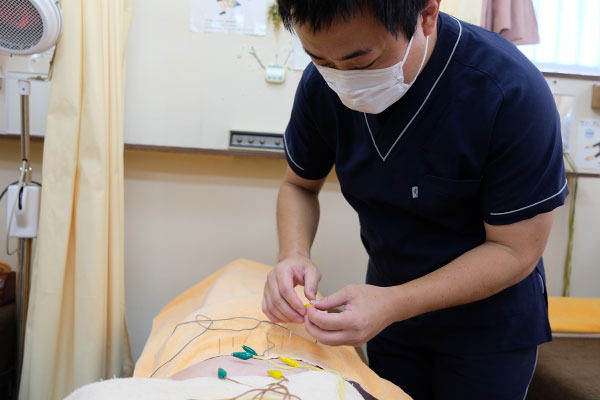
The name Seichiku Shinkyu Seikotsuin is synonymous with acupuncture and moxibustion. In fact, the clinic was founded in 1994 by a female practitioner, Ms. Toshiko Takenaka. The current acupuncturist, Mr. Yosuke Shinoda, gave us a glimpse of the most popular course at the clinic, the “Harikyu,” which features acupuncture with electric stimulation, moxibustion, cupping, and osteopathic manipulation, all for the remarkable price of 4,400 yen (2,980 yen with health insurance). A former American Football player, he now works as a coach for university teams, helping to increase performance and supporting injured players’ quick return to health.

The acupuncture needles are inserted then connected to the electro-stimulator. Mr. Shinoda can vary the strength, frequency and rhythm of the pulses depending on the condition of the individual patient. It’s effective for improving blood circulation, fatigue relief, relaxation, chronic pain relief, muscle rehabilitation, beauty treatment and a whole lot more.
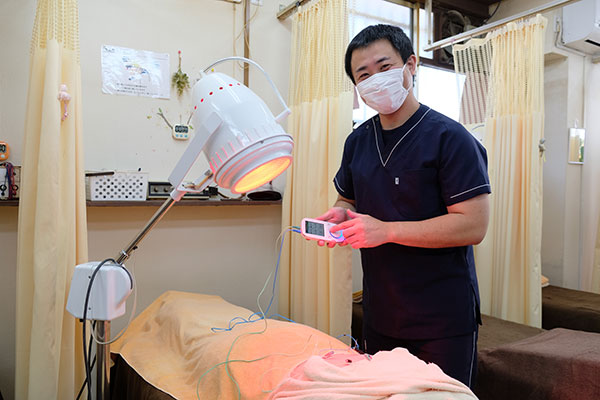
As Mr. Shinoda explained, “We insert the needles into the acupuncture points, then the electric current flows along the meridians between them, stimulating large areas.” Mr. Shinoda demonstrates different settings, some sharp and localized, some so low frequency that I can’t feel the pulses but my entire upper back becomes warm and relaxed. It’s a very enjoyable sensation and a real bargain at the price.
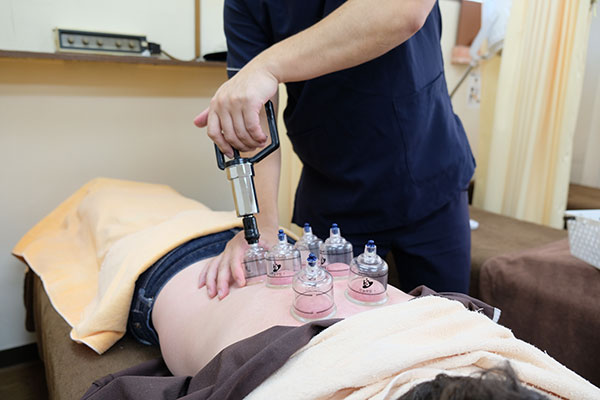
Finally, Mr. Shinoda demonstrates cupping, one of the oldest medical practices in the world. Plastic cups are placed on the skin and the air inside is removed by a suction pump, creating a vacuum. The cupping invigorates the circulation of blood, stimulates blood flow to the surface of the skin and releases tension in the muscle groups of the back, among other benefits.
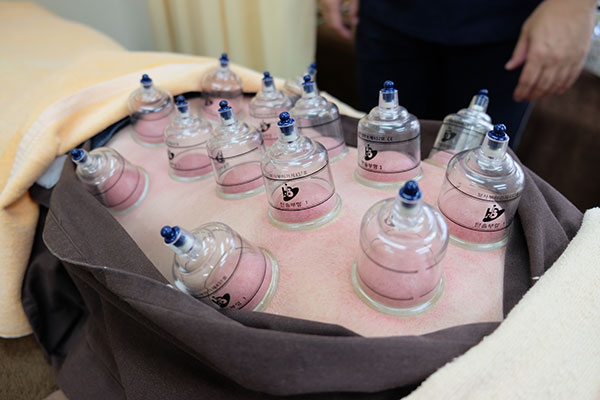
The cupping lasts for only a few minutes and is painless, there’s just a slight tightness on the back. The distinctive circular marks left on the back after a session disappear in a day or two. Seichiku Shinkyu Seikotsuin offers a variety of courses, such as this harikyu course, a manipulative therapy (seitai) course and an electrotherapy course (denki chiryo). With a Kotomise coupon customers can receive a 20% discount, which is a real bargain.
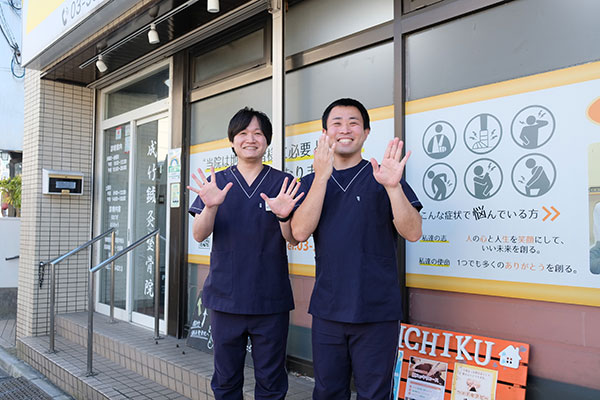
The day after we visited Seichiku Shinkyu Seikotsuin in Minamisuna I woke up feeling totally refreshed, having slept extremely well. If you’re feeling any kind of physical discomfort or are in poor condition, just drop in for a chat with the youthful and dynamic staff.
Story and some photos by Stephen Spencer

